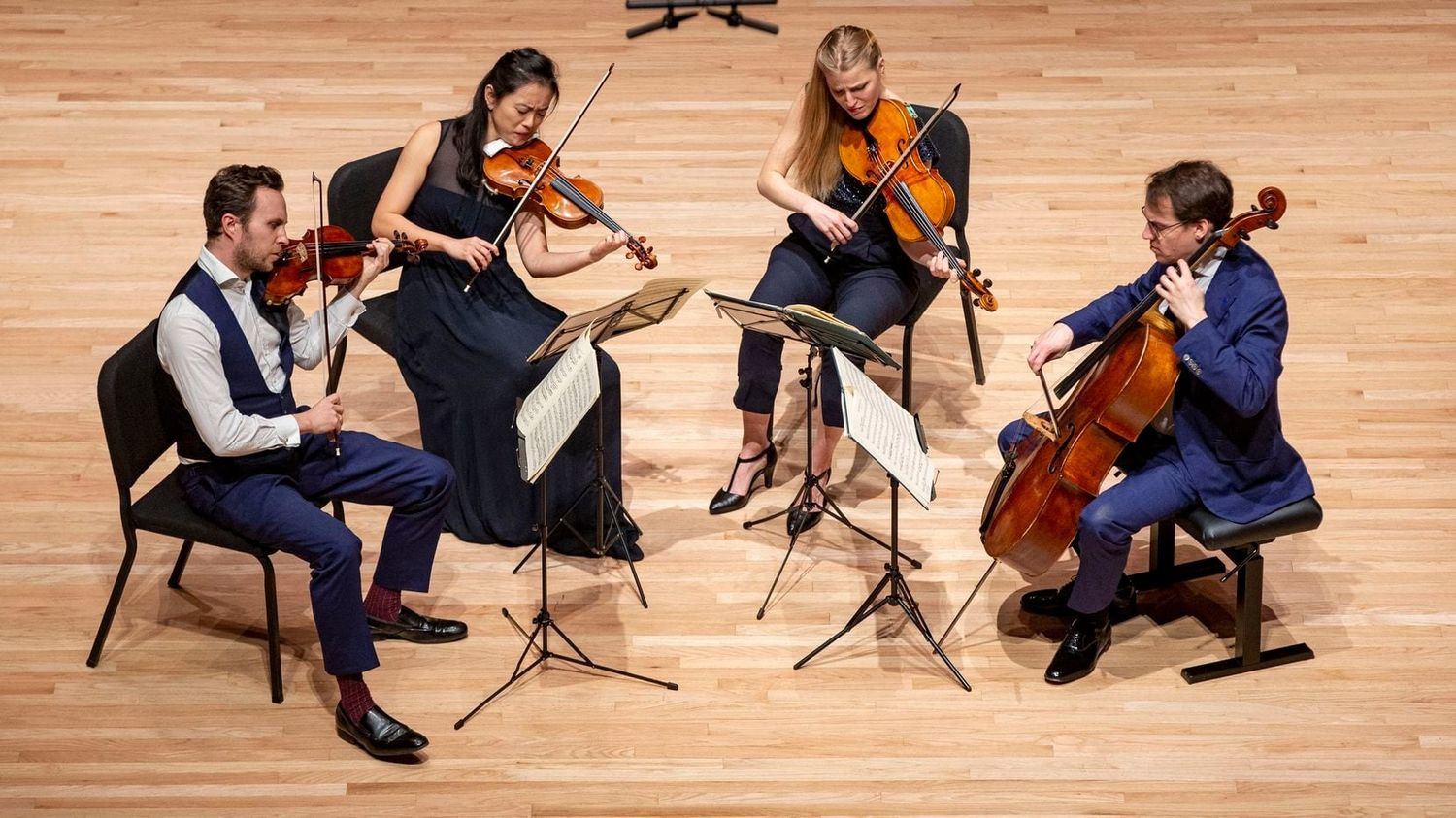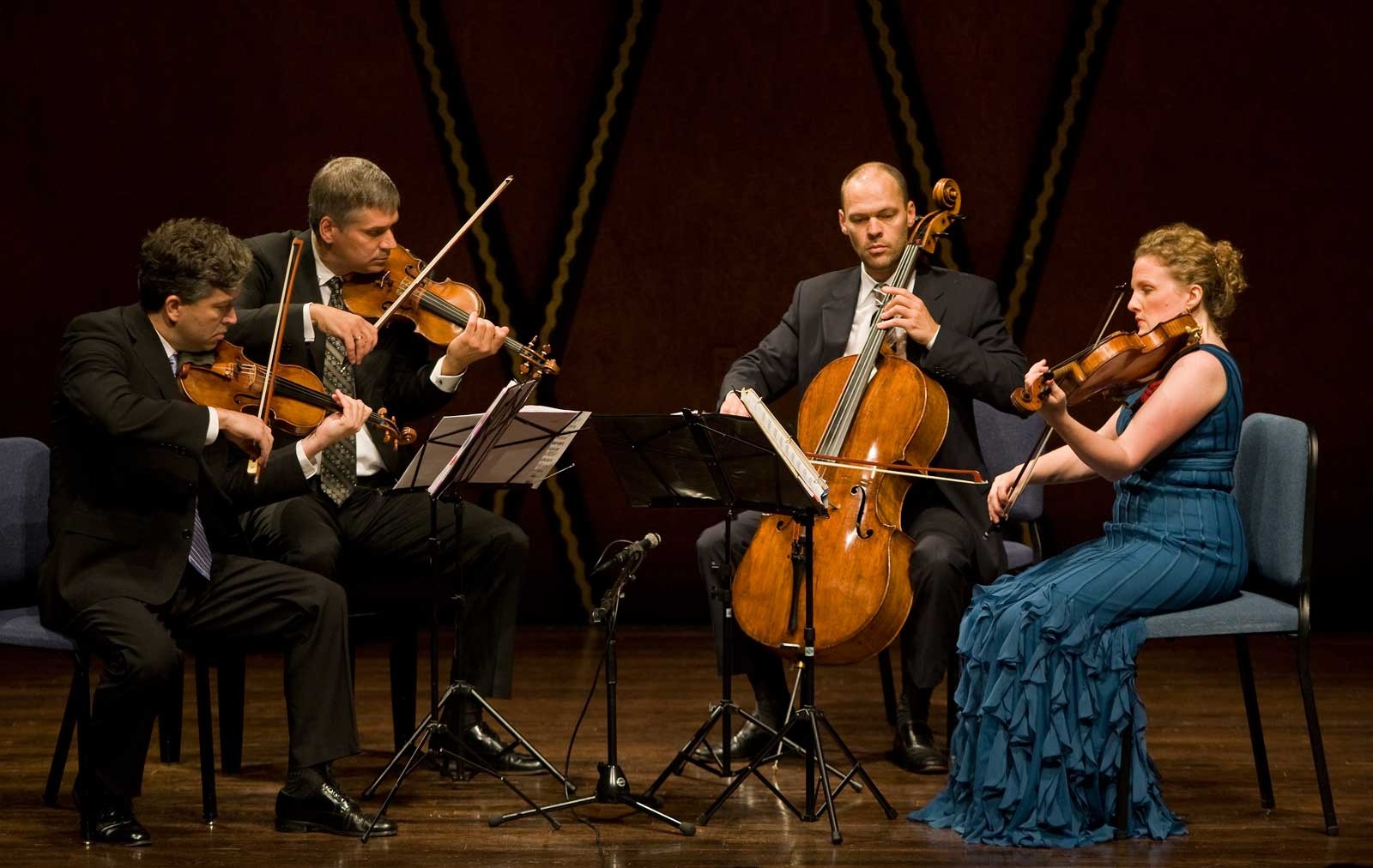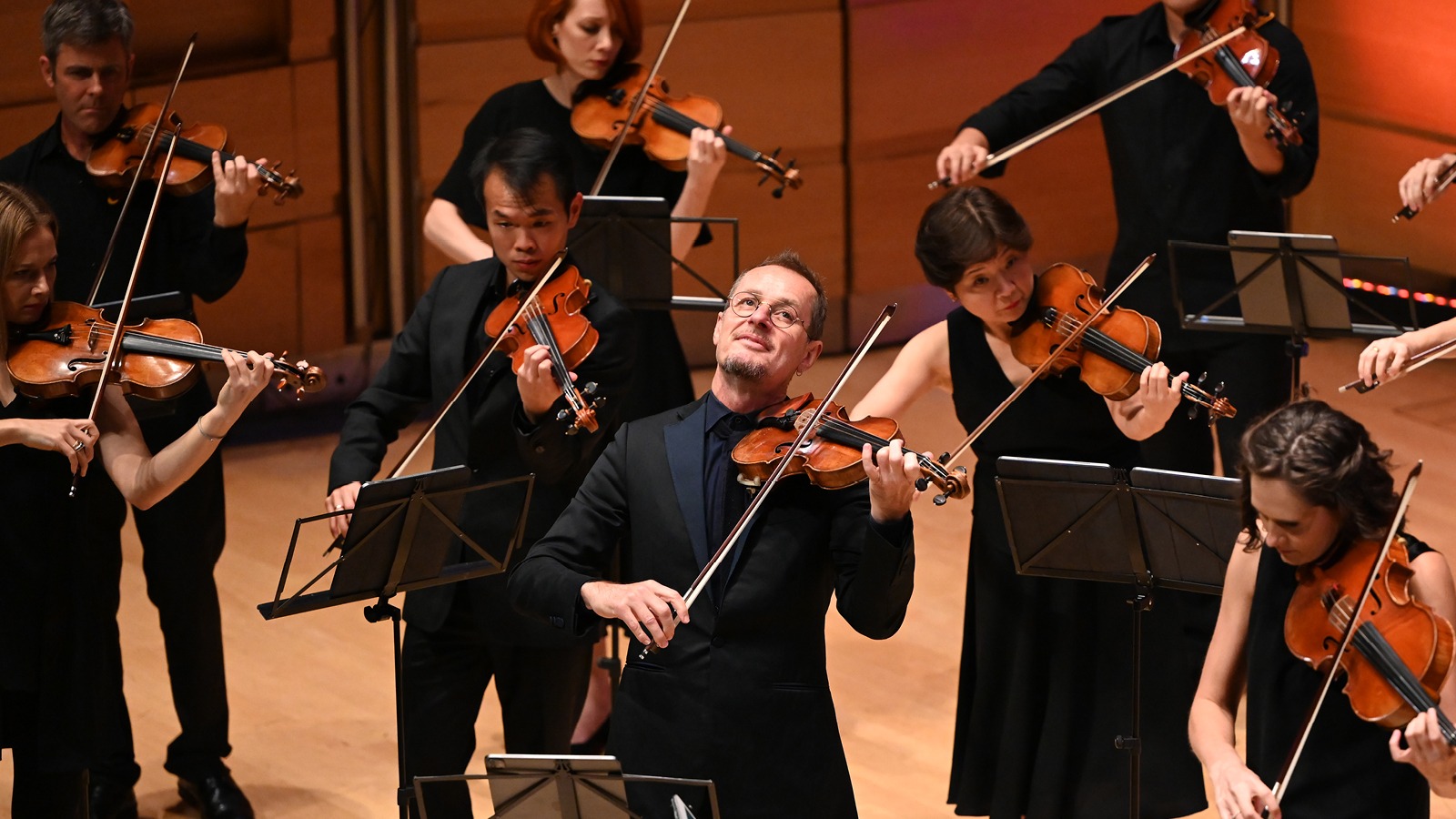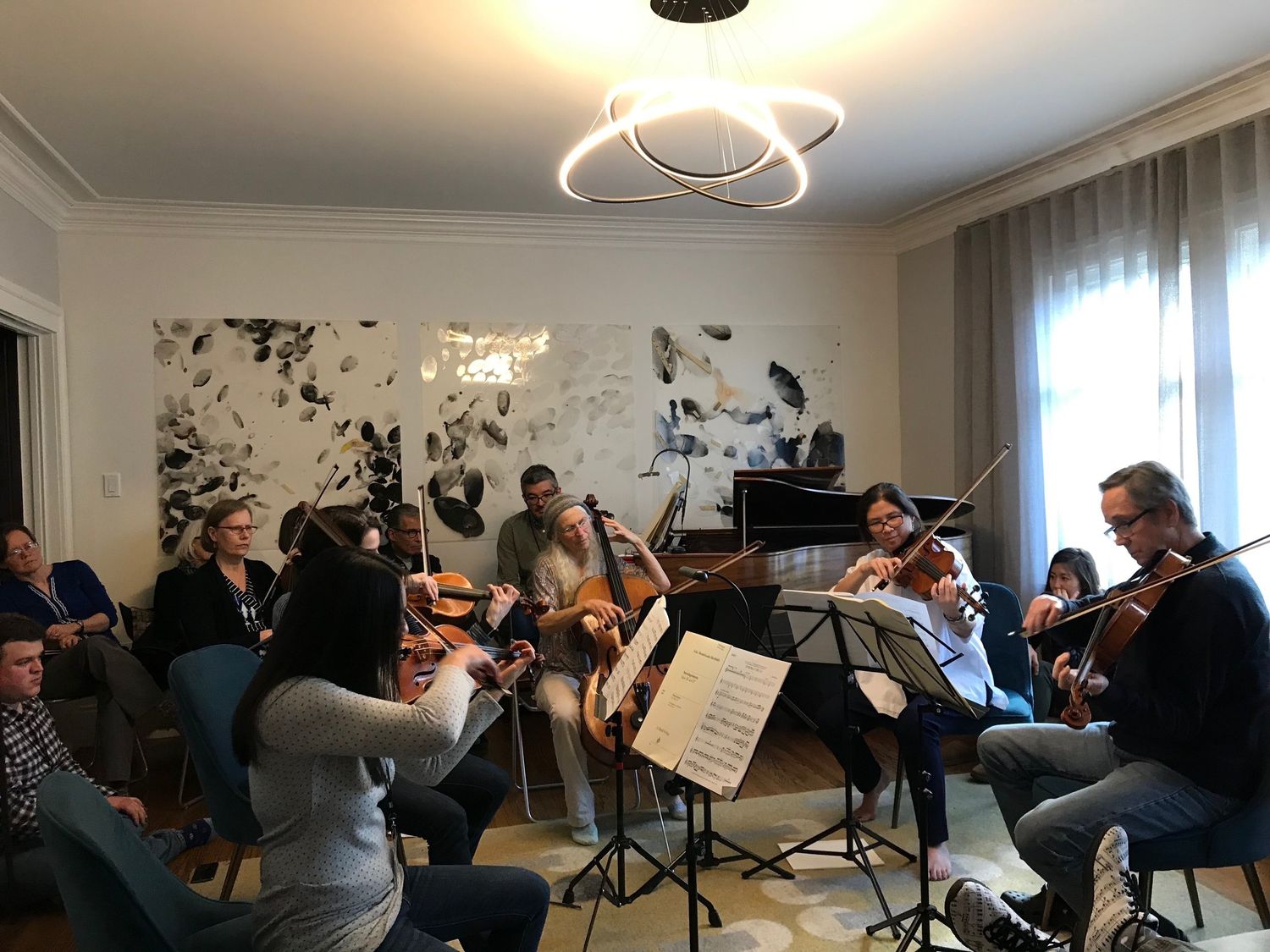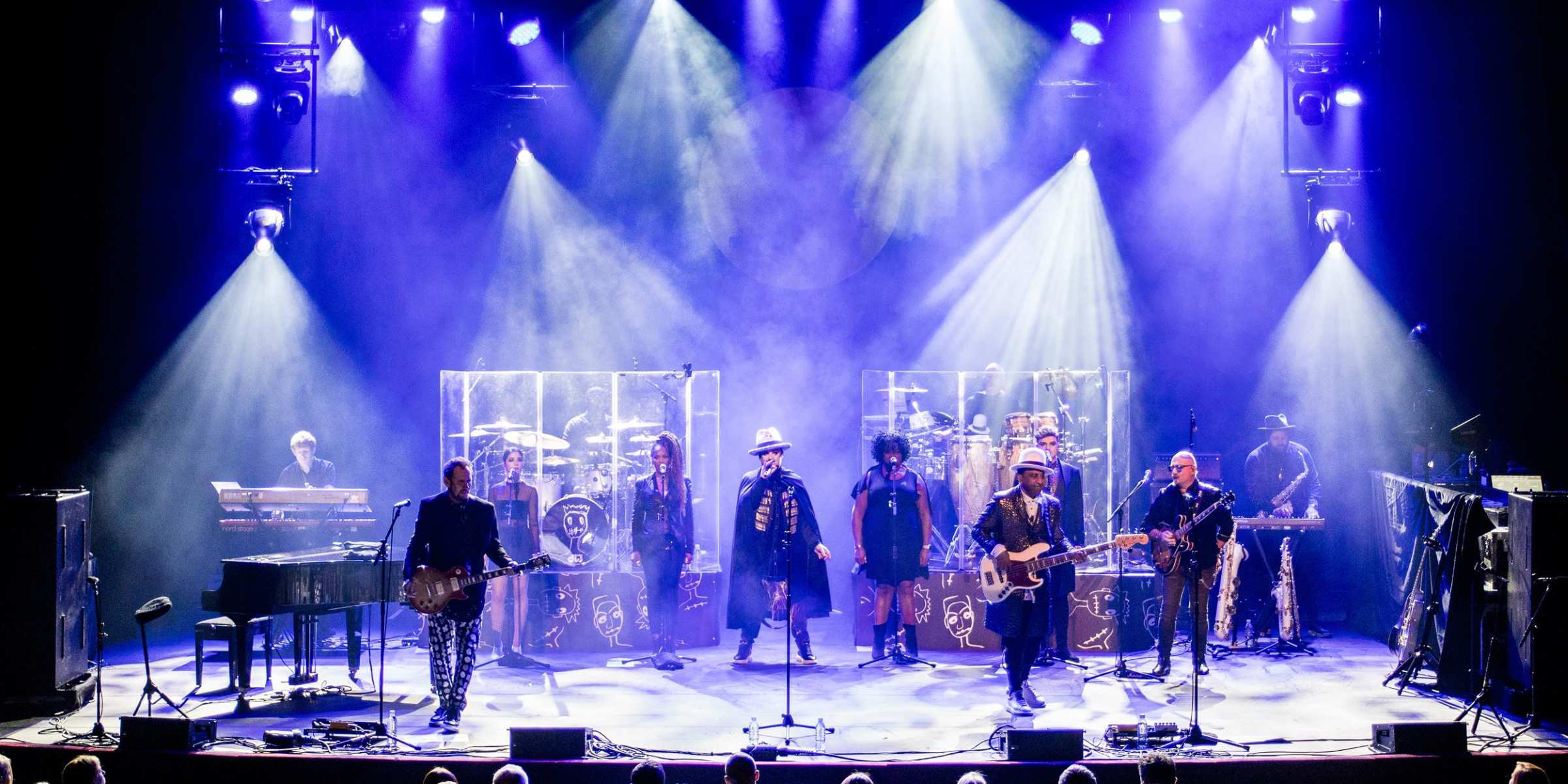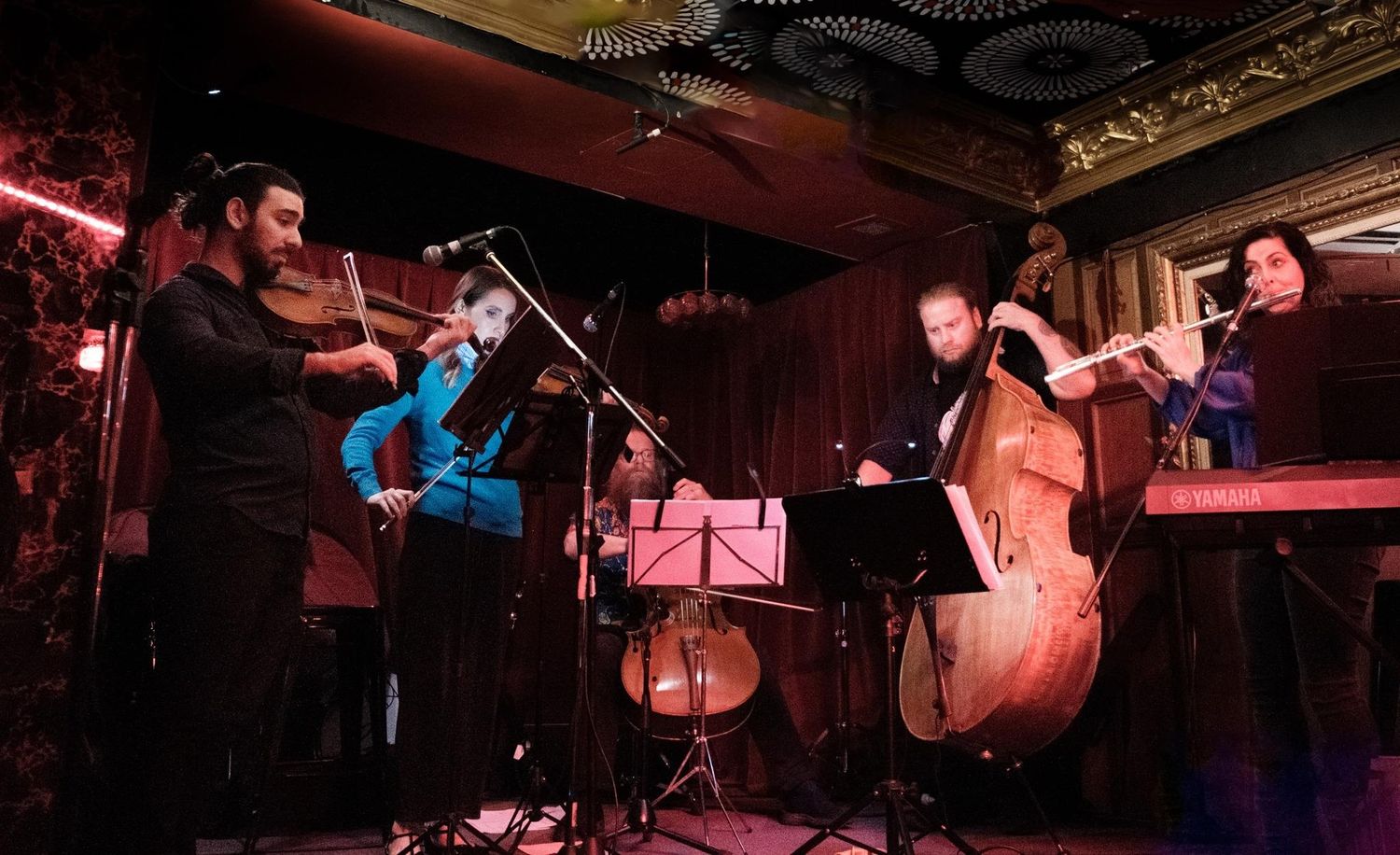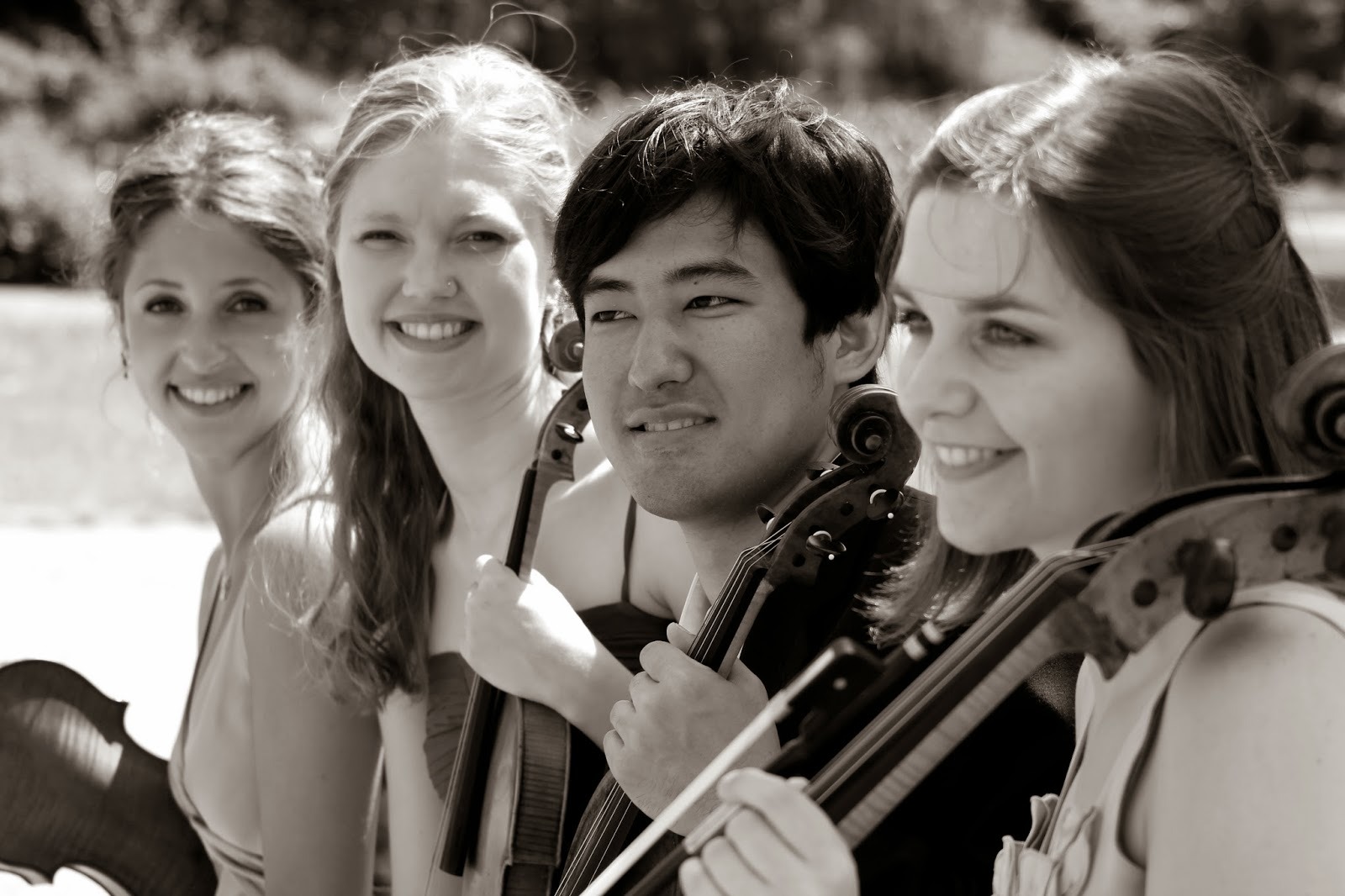Home>Events & Info>Chamber Music>What Is A Chamber Music Concert
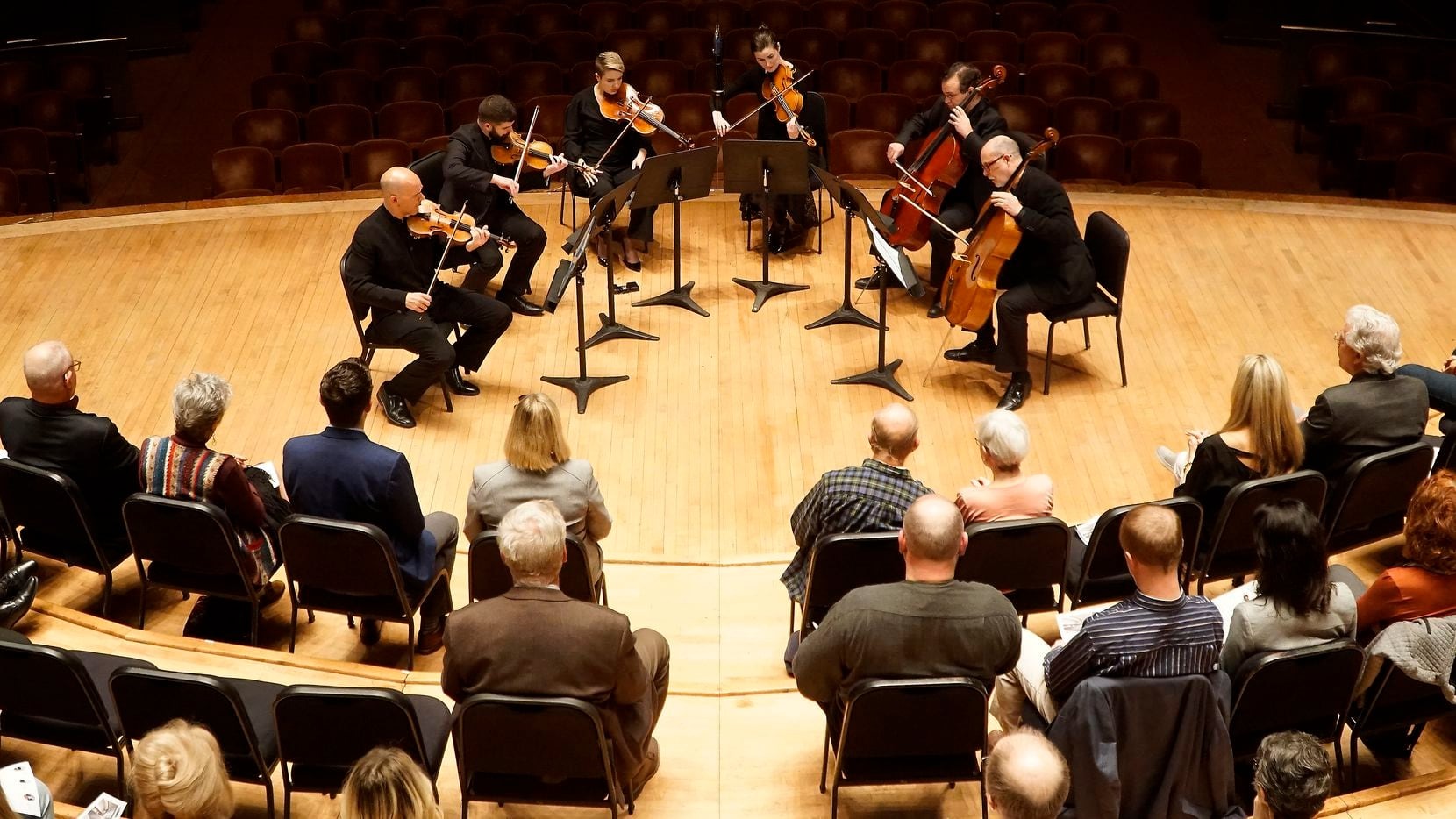

Chamber Music
What Is A Chamber Music Concert
Modified: January 22, 2024
Discover the magic of chamber music with our informative guide. Learn what chamber music is and why it's a must-see experience for music lovers.
(Many of the links in this article redirect to a specific reviewed product. Your purchase of these products through affiliate links helps to generate commission for AudioLover.com, at no extra cost. Learn more)
Table of Contents
Introduction
Chamber music, with its intimate and sophisticated nature, is a genre that has captivated audiences for centuries. The term “chamber music” refers to a type of classical music composed for a small ensemble, traditionally performed in a small room or chamber. Unlike orchestral or choral music, which requires a large number of musicians, chamber music is crafted for a small group of performers, allowing for a more intimate and nuanced musical experience.
Chamber music concerts provide a unique opportunity for musicians and audiences alike to engage closely with the music, fostering a sense of connection and shared experience. The concerts often take place in small venues, such as recital halls, private residences, or even outdoor gardens, creating an intimate setting that encourages a deep and personal connection between the performers and the listeners. This closeness allows the audience to witness the subtle nuances of the musicians’ interactions, while also providing an immersive experience of the music.
Chamber music has a rich history that traces back to the Renaissance period, with composers like Palestrina and Josquin des Prez creating early examples of polyphonic chamber music. However, it was during the Classical era (late 18th to early 19th century) that chamber music truly flourished, with composers such as Mozart, Haydn, and Beethoven paving the way for the development of the genre. Their compositions showcased the technical prowess and artistic ingenuity of small ensembles, showcasing the beauty and intricacy of the music that could be achieved with a limited number of instruments.
One of the defining characteristics of chamber music is its emphasis on ensemble playing and the interplay between individual musicians. Unlike orchestral music, where the focus is often on the conductor and the collective sound of the ensemble, chamber music highlights the virtuosity and musical conversations between each performer. The musicians must listen and respond to one another, creating a delicate balance and unity of sound.
Throughout the years, a wide variety of instruments have been used in chamber music, including string instruments like the violin, viola, cello, and double bass, as well as wind instruments such as the flute, clarinet, oboe, and bassoon. Additionally, keyboard instruments, such as the piano or harpsichord, often accompany the ensemble, providing a harmonic foundation and adding depth to the overall sound.
In the following sections of this article, we will explore the historical background of chamber music, delve into its defining characteristics, examine the structure of a chamber music concert, discuss the importance of chamber music concerts, and highlight some popular chamber music ensembles. Join us on this musical journey as we uncover the beauty and depth of chamber music!
Definition of Chamber Music
Chamber music is a genre of classical music that is specifically composed for a small ensemble, typically consisting of two to nine players. The term “chamber” refers to a small room or private chamber where these intimate performances originally took place. Unlike orchestral or choral music, which involve larger groups of musicians, chamber music focuses on the close interaction and collaboration between a small group of instrumentalists.
One of the key characteristics of chamber music is the absence of a conductor. In orchestral music, the conductor plays a crucial role in leading the ensemble and shaping the interpretation of the music. However, in chamber music, the musicians perform together as equals, relying on their collective musicianship and communication skills to create a cohesive and expressive performance.
Chamber music repertoire spans a wide range of styles and periods, from the Baroque and Classical eras to contemporary compositions. It includes compositions for duos, trios, quartets, quintets, sextets, septets, and octets, as well as larger ensembles such as chamber orchestras. The ensemble’s size may vary depending on the composer’s intention and the specific musical demands of the composition.
Chamber music compositions often showcase the technical prowess and musicality of each individual performer. The music requires a high level of precision, coordination, and sensitivity, as the musicians must navigate intricate melodies, intricate harmonies, and delicate balance. This musical intimacy allows for greater expression and interpretation, enabling the performers to explore the nuances and subtleties of the music in an intimate and collaborative setting.
Another significant aspect of chamber music is the opportunity it provides for musicians to deeply connect with one another. The small ensemble size allows for a close-knit musical community, fostering rich musical dialogues and fostering a sense of camaraderie among the performers. This shared musical experience not only enhances the quality of the performance but also creates a profound connection between the musicians and the audience.
Chamber music is often performed in venues such as recital halls, small concert spaces, and even private homes, where the intimacy of the setting complements the nature of the music. These concerts offer a unique opportunity for audiences to engage closely with the music, observe the dynamics between the performers, and experience the intricate interplay of musical ideas.
In summary, chamber music is a genre of classical music composed for a small ensemble, emphasizing collaboration, intimacy, and musical dialogue among the performers. It is characterized by its absence of a conductor, its focus on individual expression, and its ability to create a profound and personal connection between the musicians and the listeners.
Historical Background
The origins of chamber music can be traced back to the Renaissance period, where small groups of musicians would gather and perform in the chambers of nobles and royalty. These intimate gatherings provided a platform for musicians to showcase their skills and entertain the elite. Early examples of chamber music compositions during this time included vocal madrigals and instrumental pieces for small ensembles.
However, it was during the Classical era (late 18th to early 19th century) that chamber music truly flourished. Composers such as Wolfgang Amadeus Mozart, Joseph Haydn, and Ludwig van Beethoven were influential in shaping the development of chamber music and elevating its status as a respected and revered genre. Their compositions for string quartets, which consist of two violins, a viola, and a cello, set the standard for the genre and remain some of the most celebrated chamber music repertoire to this day.
During the Romantic era (19th century), chamber music continued to evolve and expand. Composers like Robert Schumann and Johannes Brahms pushed the boundaries of the genre, experimenting with larger ensembles and incorporating more expressive and emotional elements in their compositions. The piano began to play a prominent role in chamber music, leading to the formation of piano trios and piano quartets.
In the 20th century, composers like Arnold Schoenberg, Igor Stravinsky, and Béla Bartók embraced chamber music and sought to push its boundaries further. The modernist movement brought about innovative and avant-garde approaches to the genre, with composers exploring new tonalities, unconventional instrumentation, and experimental techniques.
Today, chamber music continues to thrive and evolve. Contemporary composers, such as John Adams and Thomas Adès, are expanding the possibilities of the genre by incorporating electronic elements and blending styles from various musical traditions. The genre also embraces diversity, with ensembles exploring non-traditional instrumentation, cross-genre collaborations, and incorporating elements of improvisation.
The historical background of chamber music is not only reflected in the evolution of musical styles and techniques but also in the development of instruments and performance practices. The craftsmanship of instruments improved over time, allowing for greater technical possibilities and tonal range. Additionally, advancements in recording technology have made chamber music accessible to a wider audience, enabling listeners to enjoy high-quality performances from the comfort of their homes.
As we delve deeper into the world of chamber music, it is important to appreciate the rich historical legacy that has shaped the genre into what it is today. The passion and creativity of composers throughout history, combined with the skill and artistry of the performers, have contributed to the enduring appeal and continued relevance of chamber music.
Characteristics of Chamber Music
Chamber music possesses several distinctive characteristics that set it apart from other genres of classical music. These characteristics contribute to the unique and intimate experience that chamber music provides for both performers and listeners. Let’s explore some of the key features of chamber music:
- Intimacy: Unlike orchestral music, chamber music is performed by a small ensemble, usually consisting of two to nine players. This intimate setting allows for a closer connection between the performers and the audience, as well as among the musicians themselves. The space in which chamber music is performed is often small and acoustically favorable, enhancing the intimate atmosphere.
- Collaboration: Chamber music requires a high level of collaboration and interaction among the performers. Since there is no conductor, the musicians must rely on their musical instincts, communication, and shared understanding to bring the composition to life. Each musician’s contribution is crucial to the overall performance, creating a sense of unity and synergy within the ensemble.
- Dialogue: The individual voices of the instruments in chamber music engage in a musical dialogue with one another. This dialogue allows for the exploration of different musical ideas, themes, and motifs. The performers respond to each other’s interpretations, creating a dynamic and expressive performance that captivates the listeners.
- Balance and Clarity: Due to the smaller size of the ensemble, there is a greater emphasis on achieving a balanced and transparent sound. Each instrument is given its own voice and contributes to the overall harmonious texture of the music. The clarity of the individual lines allows for the intricate interplay of musical ideas to be clearly heard and appreciated.
- Virtuosity: Chamber music often showcases the technical skills and virtuosity of the performers. The compositions can be technically demanding, requiring precise and nimble execution of intricate passages. Each musician has an opportunity to shine individually while contributing to the collective musical expression.
- Expressiveness: Chamber music offers a platform for emotional expression and interpretation. The smaller ensemble size and closer proximity to the audience allow for greater subtlety and nuance in performance. Performers have the freedom to explore the depths of the music and convey a wide range of emotions, creating an emotional and engaging experience for the listeners.
These characteristics collectively contribute to the unique allure of chamber music. The genre’s intimacy, collaborative nature, musical dialogue, balance and clarity, virtuosity, and expressiveness combine to create a rich and immersive musical experience. Whether performed by a string quartet, a wind ensemble, or a mixed group of instruments, chamber music continues to captivate audiences and demonstrate the power of musical communication within a small and intimate setting.
Instruments Used in Chamber Music
Chamber music encompasses a wide variety of instruments, both within traditional and contemporary ensembles. The instrument selection depends on the specific composition and the desired sound palette of the composer. The following is a list of some common instruments used in chamber music:
- Violin: The violin is a string instrument that plays a prominent role in chamber music. Its expressive capabilities and versatility make it an essential component of many ensembles.
- Viola: Slightly larger than the violin, the viola has a lower range and a warmer tone. It complements the sound of the other string instruments and provides depth to the ensemble.
- Cello: With its rich and resonant sound, the cello serves as the foundation of the string section in chamber music. It often carries the melodies and provides a sonorous bass line.
- Double Bass: In larger chamber music ensembles or when a lower range is desired, the double bass is employed. It adds depth and richness to the overall sound and reinforces the lower frequencies.
- Flute: The flute is a versatile woodwind instrument that brings a bright and lyrical quality to chamber music. Its agile nature allows for nimble melodic lines and expressive passages.
- Clarinet: The warm and expressive timbre of the clarinet makes it a popular choice in chamber music. It can convey a range of emotions and blends well with other instruments.
- Oboe: The oboe’s distinct and haunting sound adds depth and richness to chamber music. It often performs prominent solos and contributes to the ensemble’s overall texture.
- Bassoon: Known for its deep and resonant tone, the bassoon provides a solid foundation in chamber music. Its expressive capabilities and agile nature enhance the ensemble’s dynamics.
- Horn: The horn adds a majestic and regal quality to chamber music. It is capable of producing a wide range of tones, from soft and mellow to powerful and triumphant.
- Trumpet: The trumpet’s piercing and vibrant sound adds brilliance and energy to chamber music. It often performs fanfares and fanfare-like melodies.
- Trombone: With its rich and mellow sound, the trombone brings depth and resonance to chamber music. It often performs lyrical melodies and provides harmonic support.
- Piano: The piano is a versatile instrument and is frequently used in chamber music, both as a solo instrument and as an accompanying instrument. It offers a wide range of expressive capabilities and complements other instruments.
These instruments, along with many others, create the diverse and rich sonic tapestry of chamber music. Composers carefully select and blend these instruments to evoke specific emotions, explore a variety of textures, and create a balanced and captivating performance.
It is worth noting that contemporary chamber music composers have expanded the instrument selection beyond the traditional repertoire. They often experiment with electronic instruments, world instruments, and unconventional instruments, further pushing the boundaries of the genre and creating unique and innovative sounds in chamber music performances.
Overall, the combination of various instruments in chamber music contributes to the ensemble’s intricacy and serves as a medium for expression and musical dialogue among the performers. The instrumental variety in chamber music is a testament to the genre’s ability to adapt to the ever-changing landscape of music and capture the imaginations of audiences around the world.
Structure of a Chamber Music Concert
A chamber music concert follows a structured format that allows for the exploration of multiple compositions and showcases the artistic talents of the ensemble. While the specific order and repertoire may vary, the general structure of a chamber music concert typically consists of the following components:
- Opening Piece: The concert typically begins with an opening piece that sets the tone for the performance. This initial selection may vary in style and intensity, but it is often chosen to capture the attention of the audience and establish a musical atmosphere.
- Multiple Compositions: Chamber music concerts typically feature a selection of compositions, ranging from Baroque and Classical to contemporary repertoire. Each composition is performed as a separate entity, showcasing a different musical style or period. The choice of repertoire may include pieces from specific composers, a particular theme, or a mix of contrasting works to provide variety and showcase the ensemble’s versatility.
- Intermission: For longer concerts, a brief intermission is often included to allow the audience and performers to take a break. This interval provides an opportunity for refreshments, conversation, and reflection on the first half of the concert.
- Featured Solo or Chamber Group: In some chamber music concerts, a soloist or a smaller ensemble within the larger ensemble may be featured. This allows the individual musicians to showcase their virtuosity and musical talents, providing a change of pace and highlighting the diversity within the ensemble.
- Featured Composition: The concert may include a featured composition, often a well-known or significant piece of chamber music repertoire. This composition may be selected to highlight the ensemble’s strengths or serve as a centerpiece of the concert, drawing the audience’s attention to a particularly captivating and renowned work.
- Ensemble Collaboration: Chamber music concerts often feature collaborations between the performers, showcasing the interplay between different instruments and musical ideas. These collaborations may include duos, trios, quartets, or larger ensembles playing together in perfect harmony, creating a captivating musical conversation.
- Closing Piece: The concert typically concludes with a closing piece that leaves a lasting impression on the audience. This final composition may be chosen for its emotional impact, technical virtuosity, or ability to create a sense of resolution and closure. It serves as a culmination of the concert, leaving the audience with a lasting memory of the ensemble’s performance.
Throughout the concert, the performers engage in musical dialogues, showcase their individual talents, and create a cohesive and captivating performance. The structure of a chamber music concert allows for a seamless flow of music, providing a balance between contrasting compositions and showcasing the ensemble’s versatility.
It is important to note that the structure described above is a general framework, and different chamber music concerts may deviate from this format to suit the specific artistic vision of the performers or the requirements of the occasion. Ultimately, the goal of a chamber music concert is to transport the audience into a world of musical expression and create an unforgettable and immersive musical experience.
Importance of Chamber Music Concerts
Chamber music concerts hold great importance in the world of classical music and offer a unique musical experience for both performers and audiences. Here are some key reasons why chamber music concerts are significant:
- Intimacy and Connection: Chamber music concerts provide an intimate setting that allows for a close connection between the performers and the audience. The smaller ensemble size and the absence of a conductor create a sense of closeness and shared experience. This intimate environment allows the music to be appreciated on a deeper level, fostering a personal connection and emotional engagement.
- Musical Collaboration: Chamber music concerts highlight the importance of collaboration among musicians. With no conductor leading the way, the performers rely on their communication skills and mutual understanding to create a cohesive and expressive performance. This collaboration fosters a sense of unity, trust, and artistic excellence among the ensemble, resulting in a rich and captivating musical experience.
- Showcasing Individual Artistry: Chamber music concerts provide an opportunity for individual musicians to showcase their artistry and virtuosity. Each performer in the ensemble has a chance to shine through solo passages or prominent roles within the compositions. This spotlight on individual talent adds depth and variety to the concert and allows audiences to appreciate the unique abilities of each musician.
- Exploration of Musical Dialogues: In chamber music, the interplay between the instruments and musical ideas creates a captivating musical dialogue. Each musician interacts with the others, responding to their interpretations and weaving their individual voices together to create a harmonious whole. Chamber music concerts allow audiences to witness and appreciate these intricate musical exchanges.
- Unique Repertoire: Chamber music has a vast and diverse repertoire, ranging from renowned classics to contemporary compositions. Chamber music concerts often present a mix of familiar and lesser-known works, providing an opportunity for audiences to explore new compositions and gain a deeper appreciation for the breadth and depth of chamber music literature.
- Cultivating Appreciation for Classical Music: Chamber music concerts play a vital role in cultivating an appreciation for classical music. The intimate and accessible nature of these performances allows audiences of all ages and backgrounds to connect with the music on a personal level. Through chamber music concerts, individuals can develop an understanding and appreciation for classical music, leading to lifelong enjoyment and support for the genre.
- Nurturing Emerging Talent: Chamber music concerts provide a platform for emerging artists and young musicians to showcase their talent and gain valuable performance experience. These concerts often feature collaborations between established musicians and rising stars, fostering mentorship and growth within the musical community.
Overall, chamber music concerts bring together the splendor of individual artistry, the power of collaboration, and the intimacy of shared musical experiences. They help preserve and celebrate the beauty and depth of classical music, while also nurturing the development of emerging talent. By attending chamber music concerts, audiences can immerse themselves in the captivating world of music, connect with performers on a personal level, and experience the transformative power of live performances.
Popular Chamber Music Ensembles
Chamber music has given rise to numerous renowned and beloved ensembles that have left an indelible mark on the genre. These groups have captivated audiences worldwide with their exceptional artistry and passion for chamber music. Let’s explore some of the most popular chamber music ensembles:
- Emerson String Quartet: Formed in 1976, the Emerson String Quartet has become one of the most celebrated and influential string quartets in the world. Known for their technical precision and expressive performances, they have garnered numerous awards and accolades for their recordings and live concerts.
- Takács Quartet: Founded in 1975, the Takács Quartet has established itself as one of the leading string quartets of our time. They are known for their insightful interpretations, dynamic performances, and the emotional depth they bring to every piece they play.
- Beaux Arts Trio: The Beaux Arts Trio, founded in 1955, was one of the most esteemed piano trios in the world. Their refined and profound interpretations of classic repertoire earned them a loyal following and contributed significantly to the popularity of chamber music.
- Chamber Music Society of Lincoln Center: Located in New York City, the Chamber Music Society of Lincoln Center is a collective of esteemed musicians that presents a diverse range of chamber music programs. They curate concerts featuring both traditional and contemporary compositions, showcasing the versatility and depth of the genre.
- Academy of St. Martin in the Fields: Though primarily recognized as an ensemble for orchestral performances, the Academy of St. Martin in the Fields also excels in chamber music. Led by renowned violinist Joshua Bell, they have gained acclaim for their elegant and vibrant interpretations of chamber music works.
- Juilliard String Quartet: With a rich history dating back to 1946, the Juilliard String Quartet has long been revered as a leading force in the world of chamber music. Known for their innovative programming and technical brilliance, they continue to inspire audiences with their vibrant performances.
- Belcea Quartet: The Belcea Quartet, formed in 1994, is known for its passionate and deeply expressive interpretations. They bring a fresh perspective and a profound sense of musical understanding to their performances, earning them a devoted international following.
- Kronos Quartet: The Kronos Quartet is renowned for its adventurous and eclectic approach to chamber music. They have commissioned and recorded groundbreaking works, collaborating with composers from a diverse range of genres, ensuring that chamber music remains relevant and vibrant in the contemporary music scene.
- Hagen Quartet: Founded in 1981, the Hagen Quartet is celebrated for its technical brilliance and profound musical insight. Their performances are known for their impeccable ensemble playing, poetic interpretations, and unwavering commitment to the essence of chamber music.
- Artemis Quartet: The Artemis Quartet has won critical acclaim for its intense and passionate performances. Known for their exceptional unity and refined musicianship, they consistently deliver gripping and emotionally charged interpretations of chamber music.
These ensembles, among many others, have contributed significantly to the popularity and appreciation of chamber music through their exceptional performances and recordings. Their dedication to the genre, innovative approaches, and commitment to artistic excellence continue to inspire and captivate audiences around the world.
Conclusion
Chamber music, with its intimate settings and exquisite performances, holds a special place within the world of classical music. Its unique characteristics, including collaboration, musical dialogue, and the showcasing of individual artistry, create a captivating and engaging experience for both performers and listeners. Chamber music concerts provide a platform for musicians to connect on a personal and artistic level, fostering a sense of unity and shared expression.
The historical legacy of chamber music, dating back to the Renaissance period and flourishing in the Classical and Romantic eras, has shaped the genre into what it is today. Composers have pushed the boundaries of chamber music, exploring new styles and techniques, while also paying homage to the rich traditions of the past. The wide variety of instruments used in chamber music ensembles, from strings to wind and keyboard instruments, adds depth and diversity to the genre.
Chamber music concerts offer a unique and immersive musical experience, allowing audiences to witness the interplay between musicians and experience the nuances and emotions conveyed in each performance. The intimate setting and close collaboration between performers create a profound connection between the musicians and the audience.
Furthermore, chamber music concerts play a vital role in cultivating an appreciation for classical music, nurturing emerging talent, and expanding the repertoire through innovative interpretations and collaborations. They showcase the enduring power and relevance of chamber music, ensuring its place in the cultural landscape for generations to come.
From the celebrated performances of renowned ensembles to the joyous gatherings of local chamber musicians, chamber music concerts continue to inspire, engage, and leave a lasting impact on all who experience them. So, embrace the beauty and depth of chamber music, and immerse yourself in the extraordinary world of intimate and collaborative musical expression.

